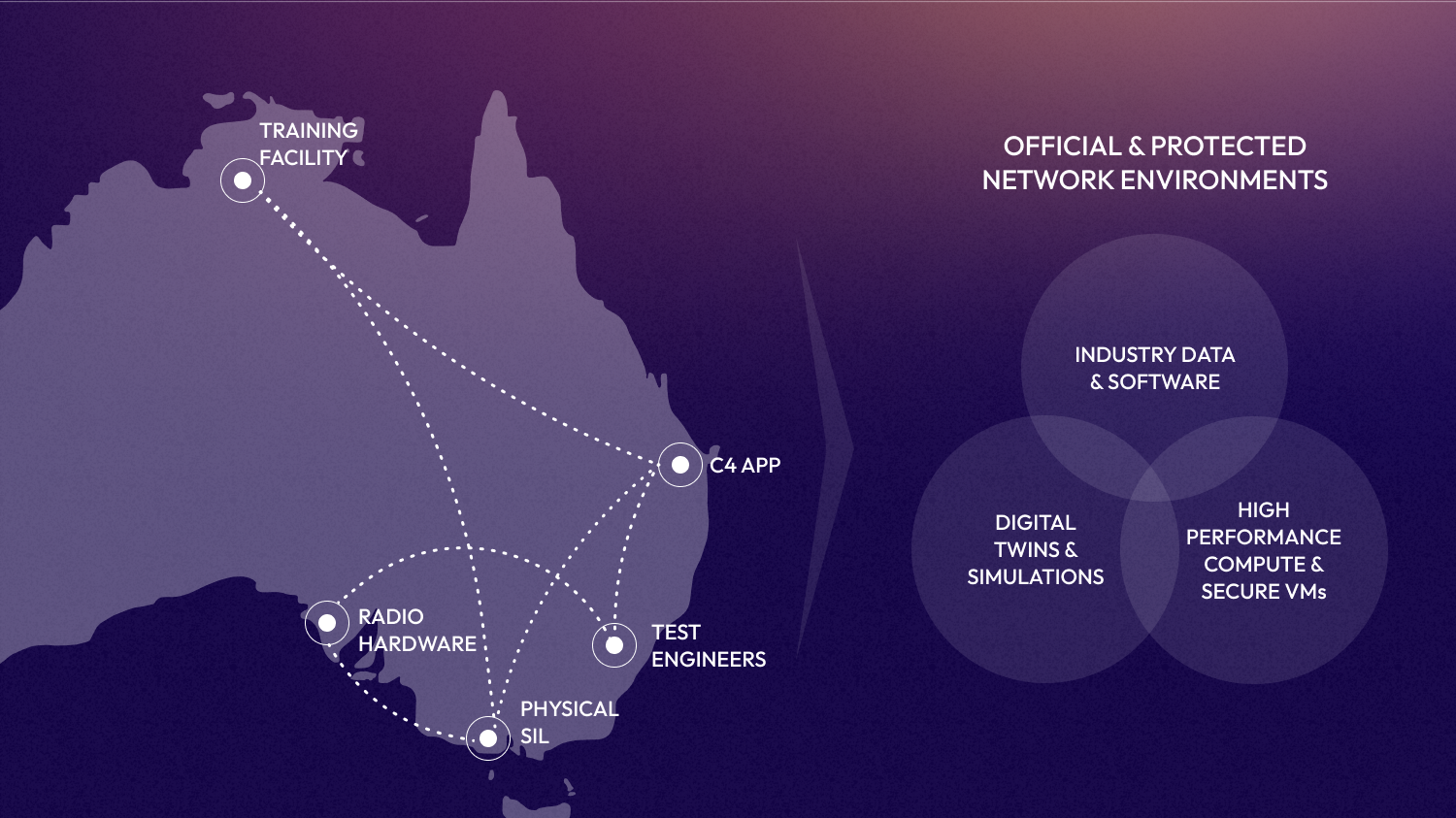
Digital Systems Integration Laboratory
Empowering Australian sovereign industry with greater opportunities to deliver valued capabilities to the ADF
/ RESEARCH / UX DESIGN / HUMAN MACHINE INTERFACE DESIGN / ENGINEEERING
↓
When the need was identified to design a sovereign Systems Integration Laboratory (SIL) platform encompassing cloud computing and a software marketplace for the Australian Defence industry, Fifty Zoo invested to ensure a human-centred design approach was taken.
We undertook research and analysis to adequately understand the challenge space before designing a flexible and extensible interface that addresses the audience's needs and reduces the risk of rework as the platform evolves.
SECTOR
Defence
TIMEFRAME
12 months
STATUS
In-Development
Our
approach
Fifty Zoo’s Experience Definition approach is specifically engineered to help design a solution that aligns with the organisation’s operating model, solves key challenges, and delivers services that customers want to use - not just need to use.
Align
We began by working with our customer to build a shared understanding of the challenge space, potential customers, use cases and what success would look like before defining a product vision and identifying gaps in our knowledge to explore with further research.
Key activities
-
Project Kickoff
-
Ethology Workshop
-
Goals Mapping
Key challenges we identified
/ Access to data and third-party tools
Due to rigorous security protocols, the high opportunity cost, and the market influence of large established defence primes, sovereign SMEs often find it challenging to access industry-standard data, simulations, tools, and compliant compute resources.
/ Perceived quality of market solutions
Historic partnerships with large international primes mean the sovereign defence industry hasn’t had a real chance to demonstrate the breadth and quality of their sovereign solutions.
/ A complicated relationship between sovereign industry and the ADF
While there is a concerted push for the ADF to procure Australian, it is difficult for sovereign SMEs to break into the defence sector, leaving the ADF more reliant on international capabilities.
“
How might we
Enable easier access to industry data and tools;
So that
Australian sovereign industry has greater opportunities to deliver valued capabilities to the ADF.
Discover
Next, we took the time to build an in-depth understanding of the target audience and competitive landscape to map the existing product development journeys and uncover the core user needs, challenges, and opportunities that are imperative for success.
Key activities
-
Stakeholder Interviews
-
User Research
-
Comparative Reviews
-
Journey Mapping
Understanding product development in the defence industry
Product development is complex in any industry, and those complexities are compounded in defence environments. Through user and stakeholder interviews, we explored how defence SMEs currently undertake product development for defence, the challenges they face, and their unique needs.
We validated and further developed key use cases, such as geographically distributed systems integration, with potential customers and platform partners allowing us to focus our design efforts where they would have the most impact.
Our findings allowed us to map process flows to identify and document user tasks, pain points and opportunities for OpenSIL to better support customer needs.
What we
learned
/ Access to suitable tooling is a universal challenge not only faced by smaller organisations.
/ Inability to integrate and test remotely with representative tools significantly impacts the ability to iterate rapidly.
/ Travel and freight costs are very high when the only way to integrate is physically in-situ. The effects of COVID-19 compound this further.
/ Remote systems integration empowers teams to iterate more effectively — a solution that allows teams to test early and often is a potent risk mitigation tool.
/ Access to high-performance compute, data, and simulation is heavily use case dependent — There may be some common use cases, but flexibility and extensibility of the platform is the most crucial factor.
/ Adequate documentation in context is required to empower effective collaboration and ensure all contributors are on the same page.
Who we’re
designing and building for
/ Defence SMEs
Secure IT infrastructure, high-performance computing, and niche software licensing can be prohibitively expensive for smaller organisations looking to work in the defence industry.
An out-of-the-box systems integration and development platform that conforms to the required standards and provides a consumption-based pricing model could go a long way in helping sovereign organisations overcome the opportunity cost of delivering valued capabilities for the defence industry.
/ Defence Primes and Systems Integrators
There is a high level of risk involved in large defence projects. This is compounded by the fact that they involve bringing together technology developed by multiple teams across Australia and the world.
openSIL’s Systems Integration Lab As A Service (SILAaS) model provides an out-of-the-box solution to bring these geographically dispersed teams from different companies together in a secure environment to test, integrate, and mitigate project risk.
/ Universities
As universities become more involved in research for the defence industry, their IT infrastructure and interoperability needs have evolved.
Affordable, out-of-the-box solutions like openSIL will enable universities to rapidly scale their secure IT infrastructure and collaborate with industry partners more effortlessly as they seek to commercialise their research capabilities and intellectual property.
Define
Harnessing the insights gained from our research, we explored and defined what the solution could look like to craft an experience tailor-made for our audience — a simple yet powerful platform customers want to use, not just need to use.
Key activities
-
Brand Concepting
-
Information Architecture
-
UX Design
-
UI Design
-
Design System
-
Functional Specifications
-
Content Guides
Design principles
/ FLEXIBLE
to support a wide range of diverse services and use-cases.
/ EXTENSIBLE
so it can grow effortlessly as the platform develops.
/ USEABLE
so the platform empowers, not hinders, users.
/ APPROACHABLE
guidance and intuitive interfaces for complex concepts.
Evolving the solution
↓ Continue reading
-
Command & Control Platform
Intuitive, secure, robust C2 for the Australian Army and first responders.















